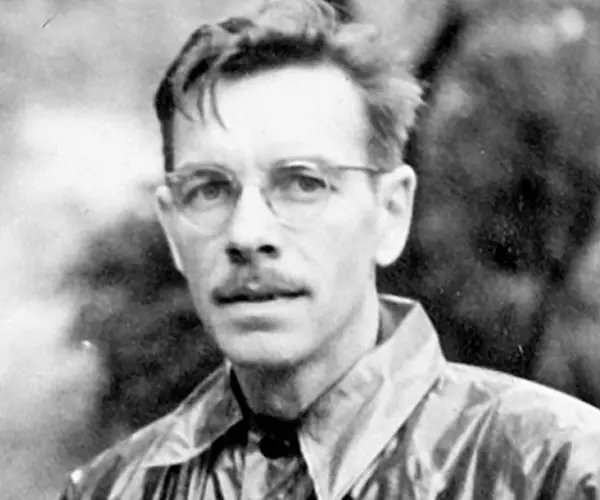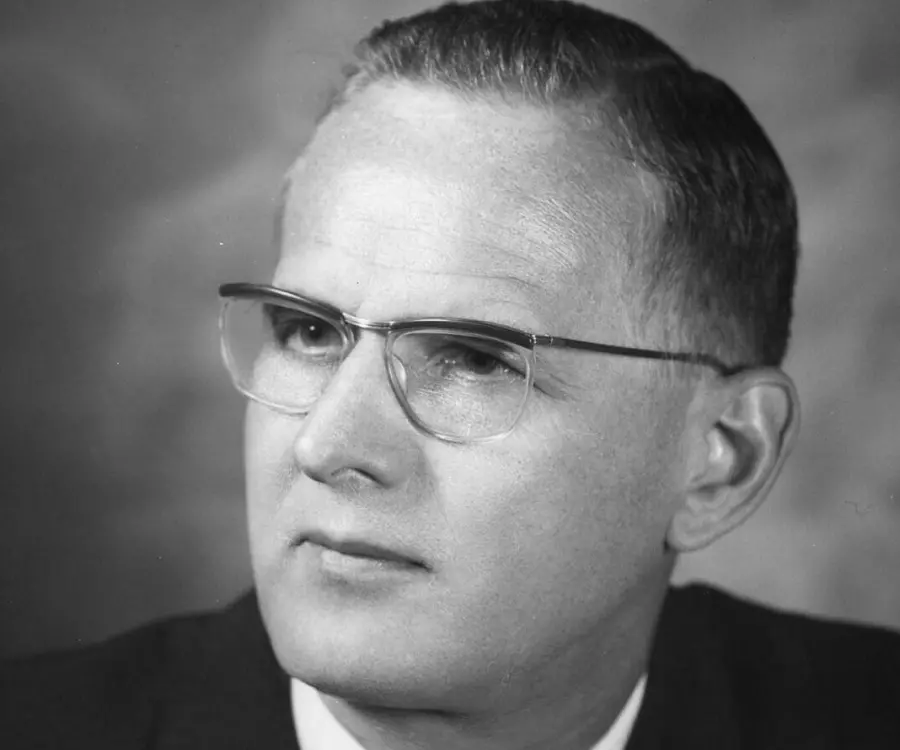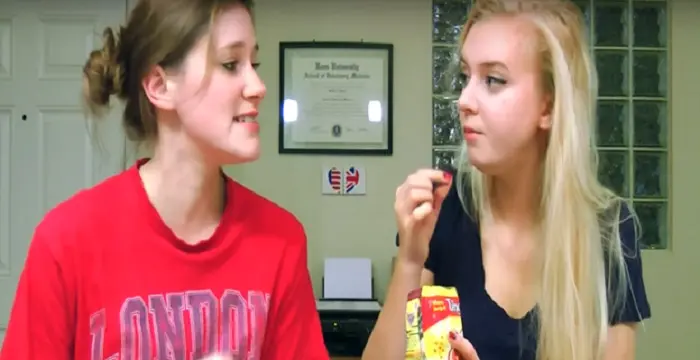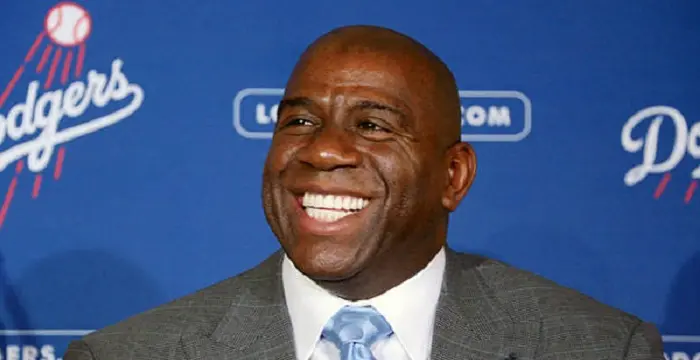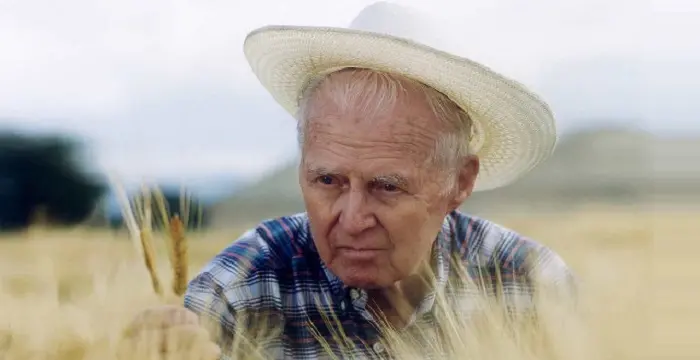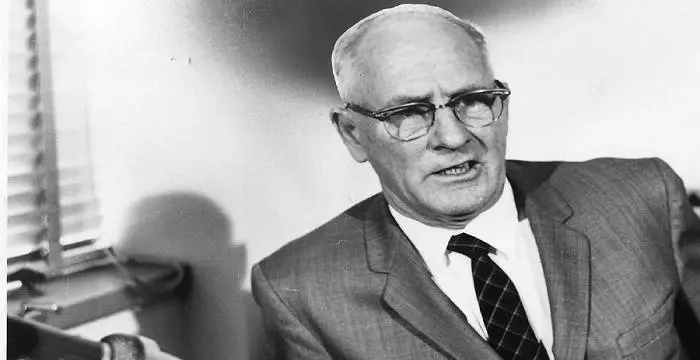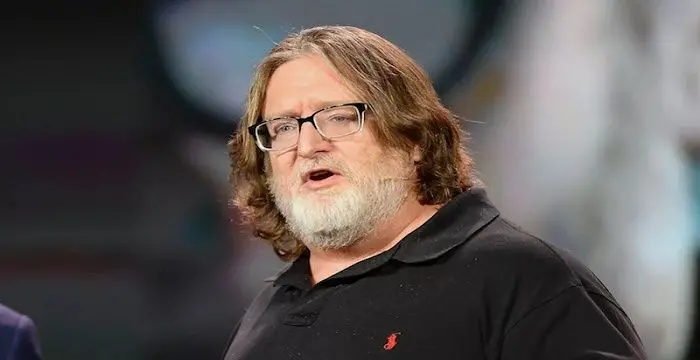
Alfred Day Hershey - Nobel Prize Winner in Medicine, Life Achievements and Family
Alfred Day Hershey's Personal Details
Alfred Day Hershey was an American bacteriologist and geneticist who won the 1969 Noble Prize in Medicine
| Information | Detail |
|---|---|
| Birthday | December 4, 1908 |
| Died on | May 22, 1997 |
| Nationality | American |
| Famous | Michigan State University, Scientists, Geneticists, Bacteriologists, Nobel Prize Winner in Medicine |
| Spouses | Harriet Davidson Hershey |
| Childrens | Peter Manning Hershey |
| Universities |
|
| Notable Alumnis |
|
| Birth Place | Owosso, Michigan |
| Gender | Male |
| Father | Robert D. Hershey |
| Mother | Alma Wilbur Hershey |
| Sun Sign | Sagittarius |
| Born in | Owosso, Michigan |
| Famous as | Nobel Prize Winner in Medicine |
| Died at Age | 88 |
Alfred Day Hershey's photo
Who is Alfred Day Hershey?
Alfred Day Hershey was an American bacteriologist and geneticist who won the 1969 Noble Prize in Medicine, which he shared with Max Delbrück and Salvador Edward Luria. He discovered the fact that DNA, not protein, was the genetic material of life. His scientific accomplishments root back to his undergraduate years, when he developed a strong interest in bacteriology. He went on to earn a doctorate in his field of interest and was appointed to work with a renowned bacteriophage researcher. He was encouraged to study viruses and soon his experiments resulted in several discoveries that made advancements in understanding of genetic inheritance and change. His comprehensive studies persuaded some other scientists to collaborate with him and together they were able to unveil some important breakthroughs regarding the genetic replication information of viruses. But it was the famous ‘Hershey-Chase experiment’ also known as the ‘blender experiment’, which he conducted with his assistant Martha Chase, that placed him miles ahead of his contemporary scientists. His discovery introduced DNA as the data capsule which contains all the information of evolution. It was a path breaking accomplishment which led to many other advancements and achievements in the field of modern genetics.
// Famous Michigan State University
Kaelyn Petras
Check out all that you wanted to know about Kaelyn Petras, the famous YouTube personality; her birthday, her family and personal life, her girlfriend, fun trivia facts and more.
Tee Grizzley
Tee Grizzley is an American rapper and songwriter. Check out this biography to know about his birthday, childhood, family life, achievements and fun facts about him.
Magic Johnson
Magic Johnson is a retired American professional basketball player, counted among the greatest basketball players of all time. This biography of Magic Johnson provides detailed information about his childhood, life, achievements, works & timeline.
Childhood & Early Life
He was born on December 4, 1908 in Owosso, Michigan, U.S., to Robert Day Hershey, an employee in an auto manufacturing firm, and his wife, Alma Wilbur Hershey.
He received his early education from the Owasso High School and after graduating from school in 1925, he was enrolled at the Michigan State College.
As an undergraduate student in the college, he developed a keen interest in bacteriology. He obtained his Bachelor in Science degree in Chemistry in 1930.
He went on to earn his doctorate degree in bacteriology from the same college in 1934. His doctoral dissertation was on the chemistry of bacteria, Brucella, responsible for Brucellosis or undulant fever and his thesis mainly described the separation of bacterial components.
Career
After his doctorate, he was appointed as an instructor in the Department of Bacteriology and Immunology at the Washington University School of Medicine at St. Louis. He got to work along with Jacques Jacob Bronfenbrenner, a pioneer in the field of bacteriophage research.
As Bronfenbrenner was pursuing his research on the physical and lysogenic properties of bacteriophages, he encouraged his faculty members to study the viruses. From 1936 to 1939, he and Bronfenbrenner published papers on the growth of bacterial cultures.
He worked for 16 years in the Washington University, from 1934 to 1950, which included teaching and researching. He was promoted as an assistant professor in 1938 and an associate professor in 1942.
During the early 1940s, he conducted his own experiments regarding immunologic reaction of phages and other factors that influenced phage infectivity. In 1943, he received an invitation from a biophysicist, Max Delbruck, who was also pursuing the same line of investigation of phage study. Delbruck wanted to discuss the results of his phage experiments with him and Salvador Edward Luria, a biologist.
Hershey accepted the invitation and went to Nashville and it was there that the three scientists formed a ‘phage group’, a team of scientists who encouraged research on particular strains of bacteriophage and met every year at Cold Spring Harbor to discuss their work and advances.
In 1945, he and Luria discovered, working independently, that the phage viruses and the bacteria they infect can undergo spontaneous mutations. Later, he and Dr. Delbruck also made an important discovery that different strains of bacteriophage can exchange genetic material when both have infected the same bacterial cell, creating a hybrid of the two. This process was referred to as ‘genetic recombination’ by Hershey.
Gradually, his study regarding bacteriophage transitioned from immunology to genetics, biochemistry, and molecular biology.
In 1950, he moved with his assistant, Martha Chase, to Cold Spring Harbor, New York and became a staff scientist in the Carnegie Institution of Washington's Department of Genetics. In 1952, he and Chase performed the ‘Hershey-Chase experiment’ also known as the ‘blender experiment’.
In 1962, he became the Director of the Genetics Research Unit of the Carnegie Institution, Cold Springs Harbor and continued his research on phage recombination and genetics.
In 1974, he retired from active research but continued visiting his research lab regularly afterwards.
Major Works
He is best known for the phenomenal ‘blender experiment’ he conducted with his colleague, Martha Chase, in 1952, which concluded that deoxyribonucleic acid (DNA), not its associated protein, is the genetic material of life. It derived the fact that DNA is the blue print of every existing lifeform on the planet which laid the groundwork for modern molecular genetics.
Awards & Achievements
He became a member of the ‘National Academy of Sciences’ in 1958 and the ‘American Academy of Arts and Sciences’ in 1959.
In 1958, he received the ‘Albert Lasker Basic Medical Research Award’ and in 1965, he was honored with the ‘Kimber Genetics Award’.
He was the recipient of the Nobel Prize in Medicine in 1969 which he shared with Salvador Luria and Max Delbr�ck. They got Nobel Prize for their discoveries concerning the replication mechanism and the genetic structure of viruses.
Personal Life & Legacy
In 1945, he married Harriet Davidson, popularly known as Jill, and they were blessed with a son, Peter.
He died of a heart failure on May 22, 1997 in Syosset, New York. He was buried at St. John’s Church Cemetery, Oyster Bay, New York.
// Famous Geneticists
Norman Borlaug
Norman Borlaug was an American biologist known as the “Father of the Green Revolution”. This biography of Norman Borlaug provides detailed information about his childhood, life, achievements, works & timeline.
George Wells Beadle
George Wells Beadle was an American geneticist who won the 1958 Nobel Prize in Medicine. Check out this biography to know about his childhood, life, achievements, works & timeline.
Gregor Mendel
Gregor Mendel was an Austrian scientist and monk credited with being the father of modern genetics for his pioneering work in the study of heredity. This biography provides detailed information about his childhood, life, achievements, & timeline.
Alfred Day Hershey's awards
| Year | Name | Award |
|---|---|---|
Other | ||
| 0 | 1969 - Nobel Prize in Physiology or Medicine | |
| 0 | Albert Lasker Award for Basic Medical Research | |
Alfred Day Hershey biography timelines
- // 4th Dec 1908He was born on December 4, 1908 in Owosso, Michigan, U.S., to Robert Day Hershey, an employee in an auto manufacturing firm, and his wife, Alma Wilbur Hershey.
- // 1925He received his early education from the Owasso High School and after graduating from school in 1925, he was enrolled at the Michigan State College.
- // 1930As an undergraduate student in the college, he developed a keen interest in bacteriology. He obtained his Bachelor in Science degree in Chemistry in 1930.
- // 1934He went on to earn his doctorate degree in bacteriology from the same college in 1934. His doctoral dissertation was on the chemistry of bacteria, Brucella, responsible for Brucellosis or undulant fever and his thesis mainly described the separation of bacterial components.
- // 1936 To 1939As Bronfenbrenner was pursuing his research on the physical and lysogenic properties of bacteriophages, he encouraged his faculty members to study the viruses. From 1936 to 1939, he and Bronfenbrenner published papers on the growth of bacterial cultures.
- // 1943During the early 1940s, he conducted his own experiments regarding immunologic reaction of phages and other factors that influenced phage infectivity. In 1943, he received an invitation from a biophysicist, Max Delbruck, who was also pursuing the same line of investigation of phage study. Delbruck wanted to discuss the results of his phage experiments with him and Salvador Edward Luria, a biologist.
- // 1945In 1945, he and Luria discovered, working independently, that the phage viruses and the bacteria they infect can undergo spontaneous mutations. Later, he and Dr. Delbruck also made an important discovery that different strains of bacteriophage can exchange genetic material when both have infected the same bacterial cell, creating a hybrid of the two. This process was referred to as ‘genetic recombination’ by Hershey.
- // 1945In 1945, he married Harriet Davidson, popularly known as Jill, and they were blessed with a son, Peter.
- // 1952He is best known for the phenomenal ‘blender experiment’ he conducted with his colleague, Martha Chase, in 1952, which concluded that deoxyribonucleic acid (DNA), not its associated protein, is the genetic material of life. It derived the fact that DNA is the blue print of every existing lifeform on the planet which laid the groundwork for modern molecular genetics.
- // 1962In 1962, he became the Director of the Genetics Research Unit of the Carnegie Institution, Cold Springs Harbor and continued his research on phage recombination and genetics.
- // 1969He was the recipient of the Nobel Prize in Medicine in 1969 which he shared with Salvador Luria and Max Delbr�ck. They got Nobel Prize for their discoveries concerning the replication mechanism and the genetic structure of viruses.
- // 1974In 1974, he retired from active research but continued visiting his research lab regularly afterwards.
- // 22nd May 1997He died of a heart failure on May 22, 1997 in Syosset, New York. He was buried at St. John’s Church Cemetery, Oyster Bay, New York.
// Famous Scientists
Juliane Koepcke
Juliane Koepcke is a German-Peruvian biologist, who was the lone survivor among the 92 passengers and crew of the ill-fated LANSA Flight 508 that crashed in the Peruvian rainforest on 24 December 1971. Know more about her life in this biography.
Henry Cavendish
Henry Cavendish was a theoretical chemist and physicist, renowned for discovery of hydrogen and calculation of the mass of earth. To know more about his childhood, profile, timeline and career read on
Konstantin Tsiolkovsky
Konstantin Tsiolkovsky was a Russian rocket scientist and a pioneer of astronautics. This biography provides detailed information about his childhood, family, personal life, career, achievements, etc.
Gabe Newell
Gabe Newell is an American computer programmer and businessman, best known as the co-founder of ‘Valve Corporation.’ This biography provides detailed information about his childhood, family, personal life, career, etc.
Grigori Perelman
Grigori Perelman is a Russian mathematician who is best known for his contributions to Riemannian geometry and geometric topology. Check out this biography to know about his childhood, family life, achievements and fun facts about him.
Eduardo Saverin
Eduardo Luiz Saverin is a Brazilian internet entrepreneur and investor. This biography profiles his childhood, life, career, achievements, and timeline
Alfred Day Hershey's FAQ
What is Alfred Day Hershey birthday?
Alfred Day Hershey was born at 1908-12-04
When was Alfred Day Hershey died?
Alfred Day Hershey was died at 1997-05-22
Which age was Alfred Day Hershey died?
Alfred Day Hershey was died at age 88
Where is Alfred Day Hershey's birth place?
Alfred Day Hershey was born in Owosso, Michigan
What is Alfred Day Hershey nationalities?
Alfred Day Hershey's nationalities is American
Who is Alfred Day Hershey spouses?
Alfred Day Hershey's spouses is Harriet Davidson Hershey
Who is Alfred Day Hershey childrens?
Alfred Day Hershey's childrens is Peter Manning Hershey
What was Alfred Day Hershey universities?
Alfred Day Hershey studied at Michigan State University, Michigan State University
What was Alfred Day Hershey notable alumnis?
Alfred Day Hershey's notable alumnis is Michigan State University
Who is Alfred Day Hershey's father?
Alfred Day Hershey's father is Robert D. Hershey
Who is Alfred Day Hershey's mother?
Alfred Day Hershey's mother is Alma Wilbur Hershey
What is Alfred Day Hershey's sun sign?
Alfred Day Hershey is Sagittarius
How famous is Alfred Day Hershey?
Alfred Day Hershey is famouse as Nobel Prize Winner in Medicine
